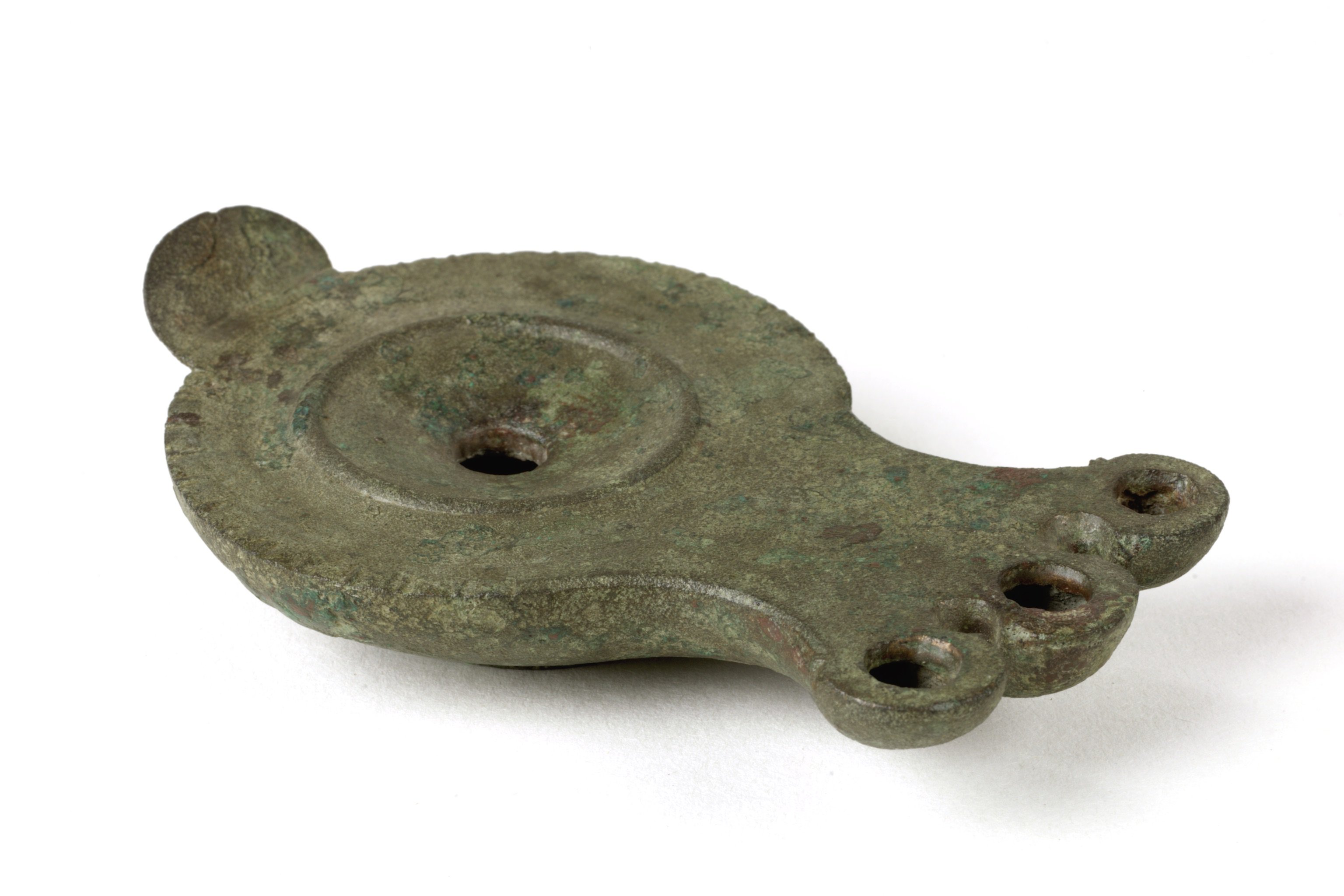oil lamp activity
This activity is aimed at schools & families to help discover the wonder of Roman objects in our collection.
Oil Lamp

A rare example of a complete bronze oil lamp with three wick holes. There is a raised rib round the filling hole, incisions round the edge of the lamp and a small flat protrusion that might have been a reflector or handle opposite the wick end. Roman oil lamps are generally rare in northern Britain, but a fine example such as this with multiple wick holes was likely to have been brought in from the Mediterranean area. This example was found in the area surrounding the house used by the Commanding Officer of the fort and may have come with one of the commanding officers when they arrived to take up their post at Arbeia Roman Fort sometime in the second century.
Oil lamps were used as a source of light by all Romans. Artificial light was common throughout the Roman Empire. Oil lamps offered an alternative to candlelight. The most common material used was pottery, and had only one wick. The bronze example above would have been expensive to produce and require a lot of oil. Oil lamps functioned by adding oil through the central hole, and burning a wick placed into the nozzle area. Wicks were commonly made from pieces of linen but could also be made from flax or papyrus. Although there are some known areas in Britain of lamp manufacture, many of the lamps found here would have been imported from Italy, Gaul (Ancient France), Germany and North Africa. The number of lamps found in Britain is much lower than in other parts of the Empire and this is thought to be due to the cost of importing olive oil. Oil, made from olives or other vegetables was a valuable resource and the cost involved in burning oil, which could otherwise be used as fuel, is thought to have been too expensive for widespread use of the lamps in Roman Britain. Use of these lamps in Britain was especially popular amongst the army.

Many oil lamps were decorated with designs, gods and goddesses, and took the shape of animals. The example above looks like a bird. Birds were considered good luck.
Watch this video from the Bournemouth Natural Science Society on the history of oil lamps and to see the variety of oil lamp designs.
Activities
Take a good look at this oil lamp
What do you see, notice and wonder about it? Do you think every soldier would have had an oil lamp? How many do you think you would need to light up a room? What activities would require you to use such a lamp? Do you think they may have been used in ceremonies and to light up altars? Do you think they were safe or caused many fires?
Now it’s your turn
Design your own oil lamp. What shape will it take? Will it be an animal, geometric, one wick or more? What designs would you use? Will you include a god or goddess? On a piece of paper draw what you want your oil lamp to look like. Using materials you already have, try to make a 3-D model of your oil lamp. You could use paper plates, toilet roll tubes, card, tin foil, salt dough, or clay.
Learning extension
An archaeologist is somebody who looks at ancient sites and objects to learn about the past. They are looking for clues and evidence about how people used to live. Archaeologists dig in the ground using a trowel or brush to carefully remove layers of soil in order to find these objects. The bronze oil lamp in our collection was found by an archaeologist in the area surrounding the house used by the Commanding Officer of the fort. It's your turn to become the archaeologist. What other objects do you think might have been buried from when people lived in Arbeia? What do you think these objects tell us about the activities, and life of the people there? Think about the different areas of the fort, the materials that the Romans used and had access to, and the different jobs people held. Watch this video Arbeia, South Shields' Roman Fort - a brief history to give you some background on Arbeia.
More online activities to enjoy
Unfortunately at this current time we can not offer our full family programmes in the museums but we have created lots of online learning activities for you to enjoy.
More online activities from our venues:
Segedunum Roman Fort
Find out about Marvellous Mondays : Home from Segedunum Collections.
South Shields Museum & Art Gallery
Take part in Take One Treasure Challenge - activities inspired by the museum collection.




